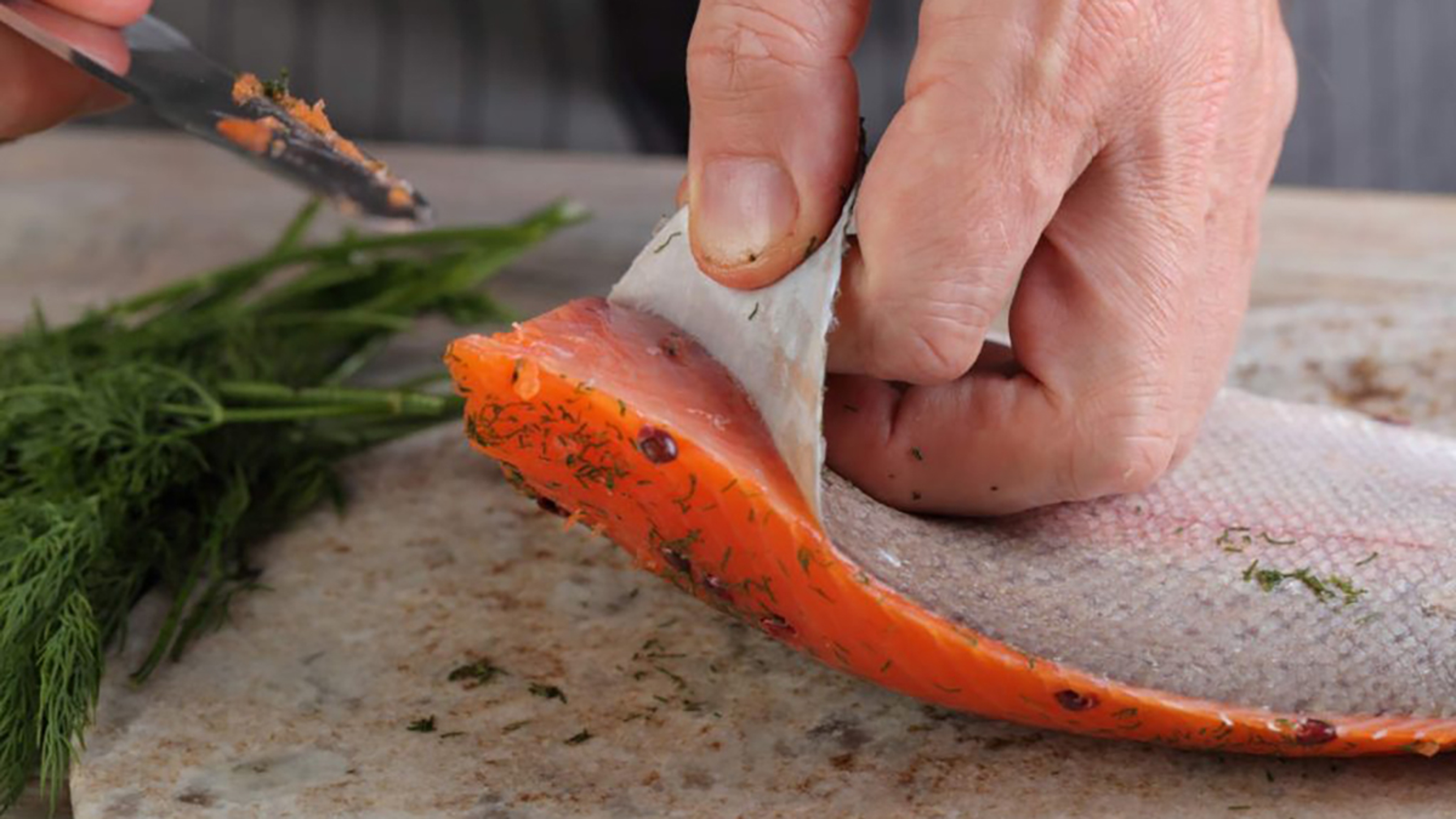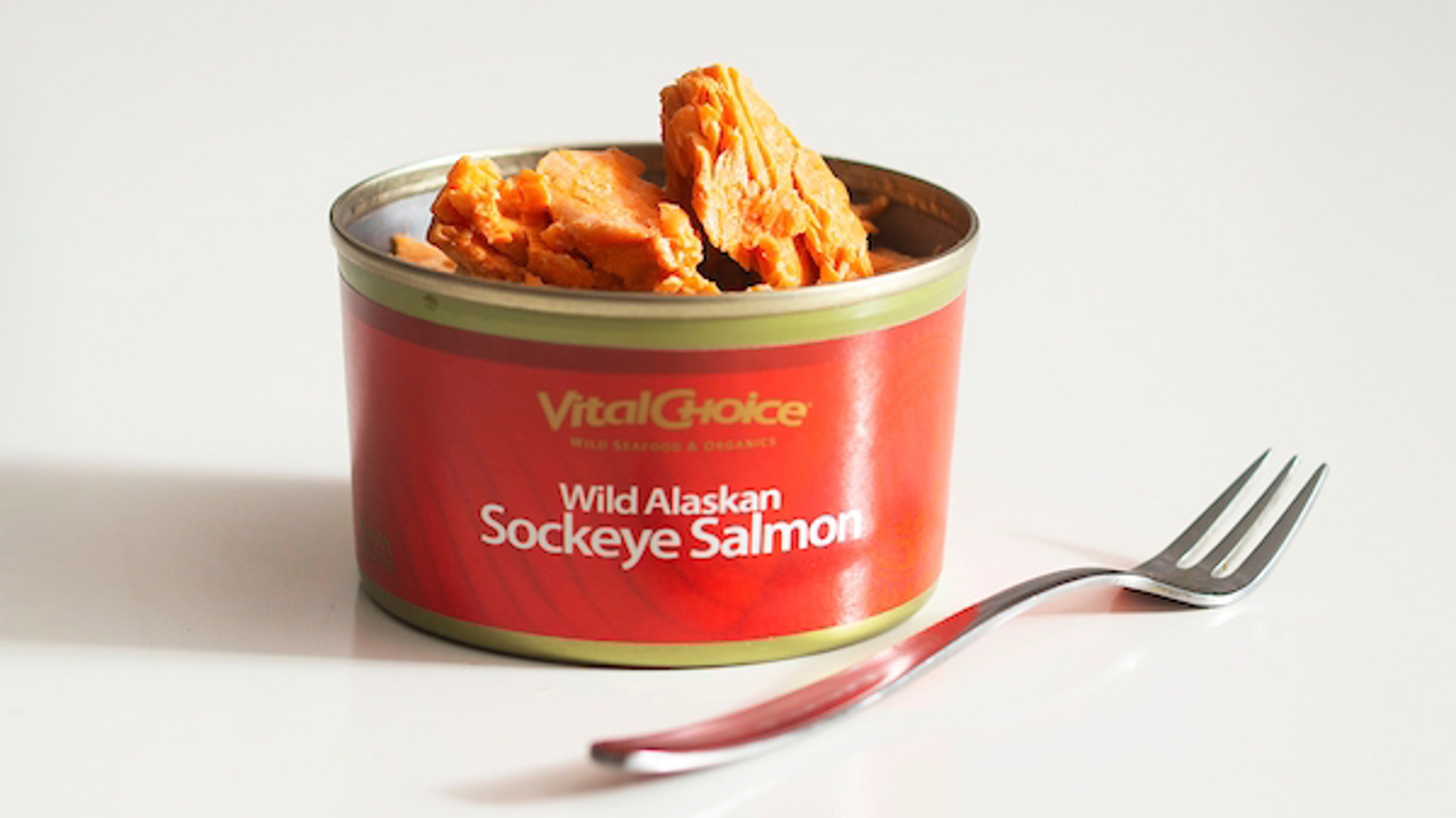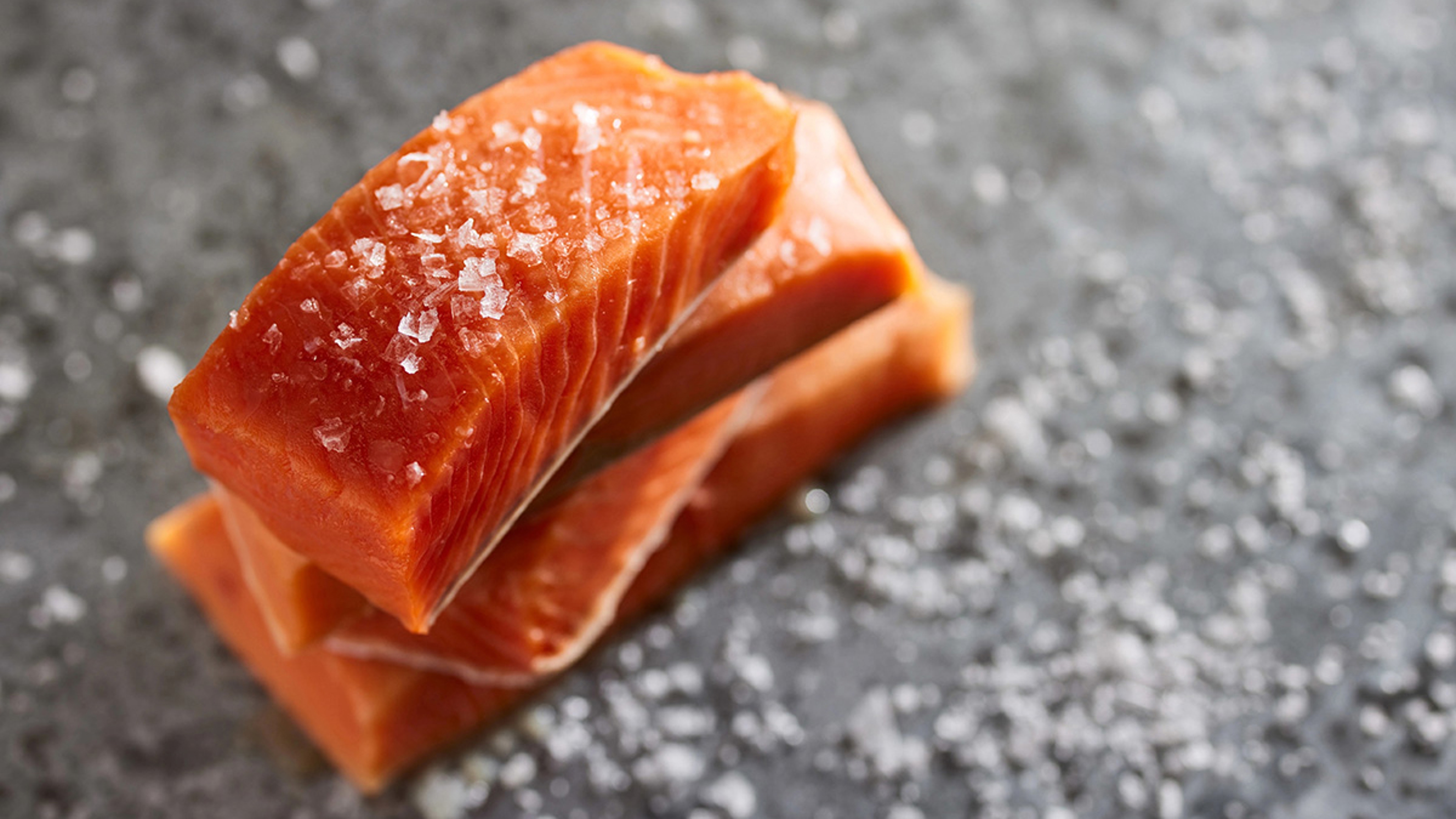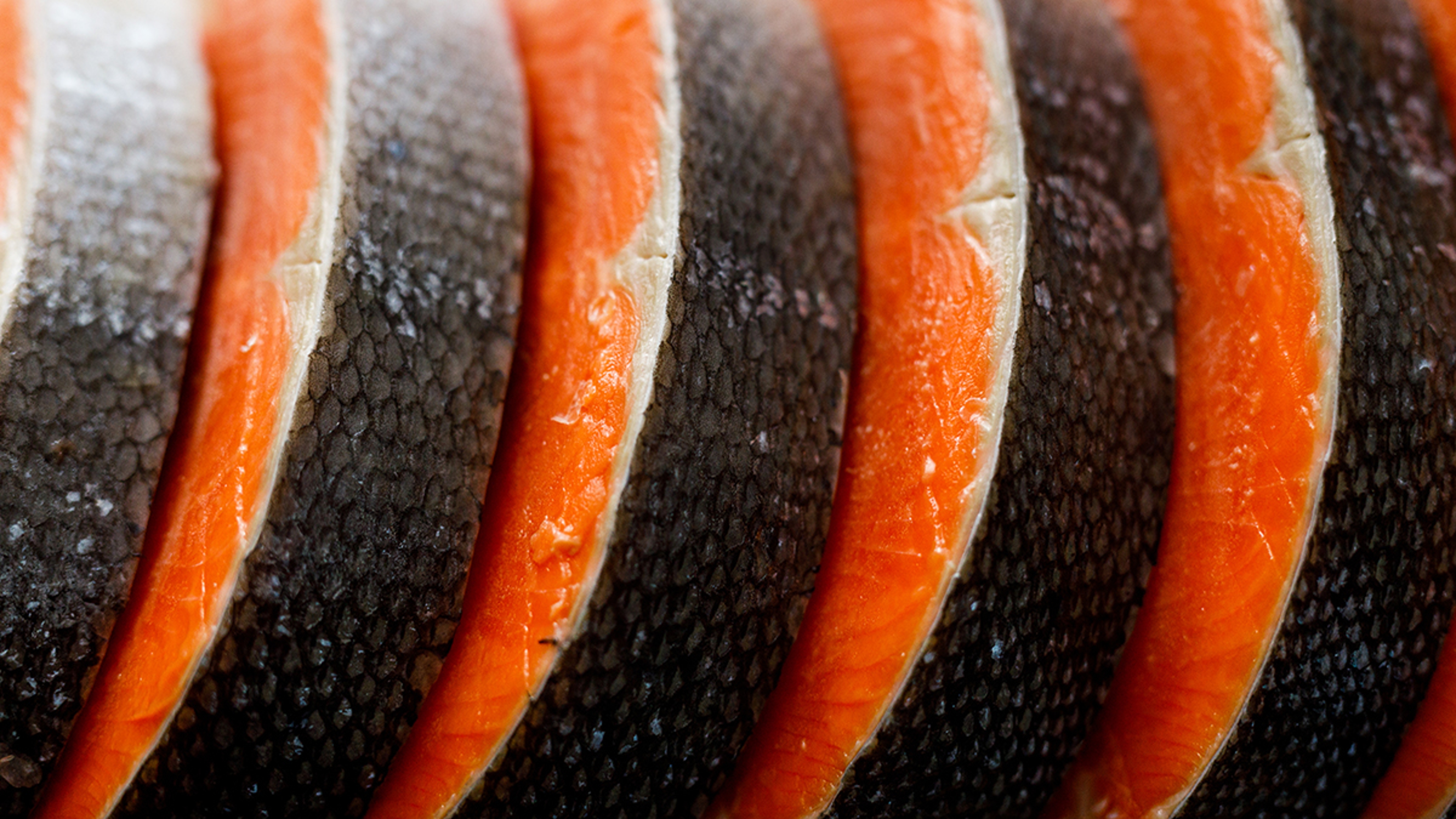Are Omega-3s Concentrated Under Salmon Skin?
Spoiler alert: Don't discard that thin, grayish layer - it's a great source of omega-3 fats.
May 10, 2022
We get many questions from customers, and we love them...that is, both the customers and the questions!
This one comes up more frequently than most:
How much of the omega-3s in salmon reside in the fatty gray layer just below the skin? I suspect most of this must be lost when the skin is removed.

To begin, some salmon anatomy. This brown or grayish "meat" is a natural layer of fat. It lies between the skin and flesh in salmon and some other oily fish.
It's sometimes called the "fat line" because it looks like a thin, grayish line between the dark skin and the pink flesh when the fish is cut into steaks.
This fatty layer tends to be thicker along the midlines of the fishes' sides, where a strip of it may remain after the scaling process. It served the same purpose as fat on any animal; as an energy reservoir to maintain strength and metabolism when food is scarce.
"So... should I eat the layer under the salmon skin?"
By all means!
It's rich in omega-3 fatty acids. It is perfectly fine and tasty to eat if the fish is either fresh or was frozen or canned quickly after it was caught. All Vital Choice fish pass this test. Otherwise, it's best to avoid. The gray layer's mostly unsaturated fats are relatively quick to oxidize (turn rancid) and may have an unpleasant "fishy" smell if exposed to the air too long.

Generally, seafood lovers enjoy the gray fat in quality fish. It's soft, buttery, and full of deep salmon flavor.
It's possible that one reason Vital Choice's fresh-packed canned and pouched sockeye salmon with consumable skin and bones is more popular than our skinless-boneless versions. It contains all of the fats found in the whole fish, and the full flavor and nutrients they impart. And in the frozen realm, our bestselling skin-on sockeye filets leave these delicious parts of the fish largely intact. But if for some reason you prefer skinless (and gray-fat-less) fish, Vital Choice has you covered with skinless, boneless versions of sockeye, as well as skinless cod, halibut, and mahi-mahi.
"What if I don't eat it?"
If you dislike the gray tissue but still seek an ample amount of omega-3 fat, never fear. Tests conducted by the USDA Nutrient Data Laboratory show that even without the skin or gray fat, the flesh of sockeye salmon alone offers more than 1.2 grams of EPA and DHA per 3.5-ounce (99 g) serving.
This exceeds the 650 to 1,000 mg recommended daily intake of omega-3s by more than 20 percent. It means that a single six-ounce portion of our skinless-boneless sockeye salmon still contains an amazing two-plus grams of omega-3s per serving.
So, whether the flavorful and nutritious gray fat is consumed or not, one is assured of getting a significant “dose" of EPA, DHA (and many other nutrients, including vitamin D) with each serving.







